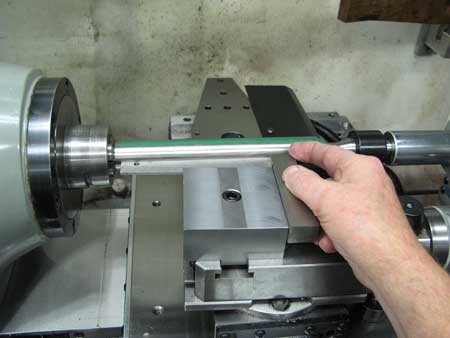
Compound Setting Block
©
Frank Ford 2006; Photos by FF
Recently I dedided it would be handy to be able to set my lathe compound to a precise angle without having to do too much measuring or calculation, so I made this block to fit the T-slot and extend above center height. That way, I could index the compound directly to the tailstock ram or a rod held between centers.
Here's the block. It's quite square and fits tightly into the T-slot:

Easy to lock down with a 5/16" cap screw:
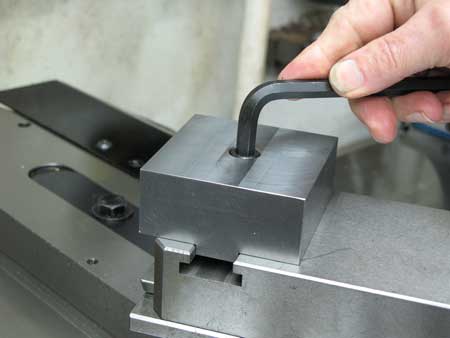
Now, to set the compound, I can loosen the swivel bolts and simply rotate
it until it fits tightly against an angle block held against the tailstock
ram:
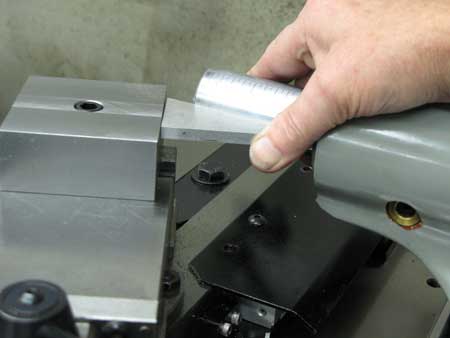
Then, all I have to do is lock the compound and I'm good to go.
Part the Two, setting the angle to take off tenths -
A friend gave me the idea of making an angle gauge to set the compound so that the .001" marks on the graduated dial would take off .0001" from the diameter. Since the graduations are for the actual movement of the slide, moving in .001" reduces the diameter by .002". In order to achieve .0001" reduction for each graduation, I'd need to have an effective 20:1 ratio.
Even if I did calculate the necessary angle, without that sine bar I plan to get and learn to use, I'd have no way to measure it precisely, so I decided on a more mechanical approach. I started with a cheap machinist square that had about a four inch "fat" leg. Working with 3" of that leg as a basis, I divided 3 by 20 and got .150" as the amount of differential from one end of the 3" distance to the other.
Setting a .150" pin gauge so it would be centered 3" from the back corner
of my mill vise was easy, and I glued the pin against the vise with some white
grease:
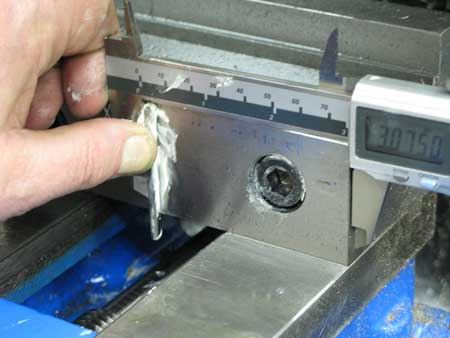
You'll notice that I'm using my caliper set to 3" plus half the diameter of the pin.
I stuck the square in the vise, and backed it up with a piece of scrap brass
so I could tighten down securely:

Now, the blade of the square was hanging out there, loose in space, but I
went ahead and milled the angle along it. The blade vibrated a bit, but
by taking very light cuts, I was able to cut it quite smoothly:

Now, I have a modified square with which I can quickly and easily set my compound
to the precise angle necessary to be able to dial tenths off the diameter:
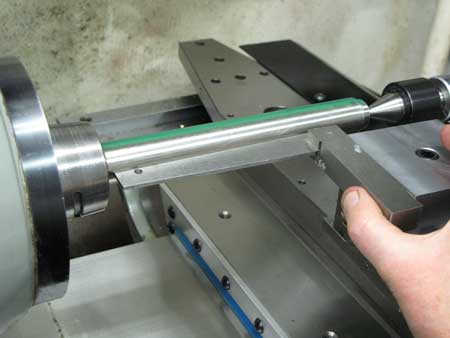
I can use it as a square (above) or I can use the blade as an angle block:
